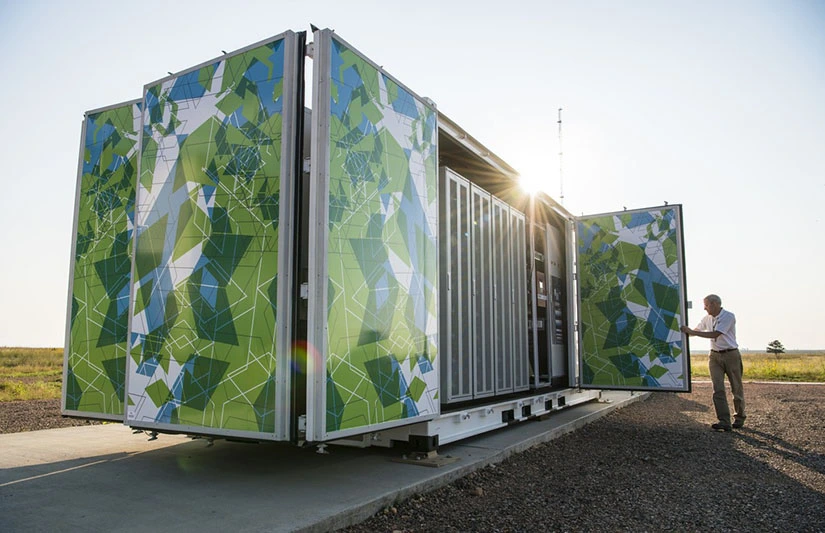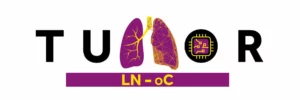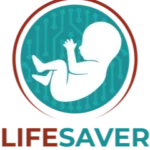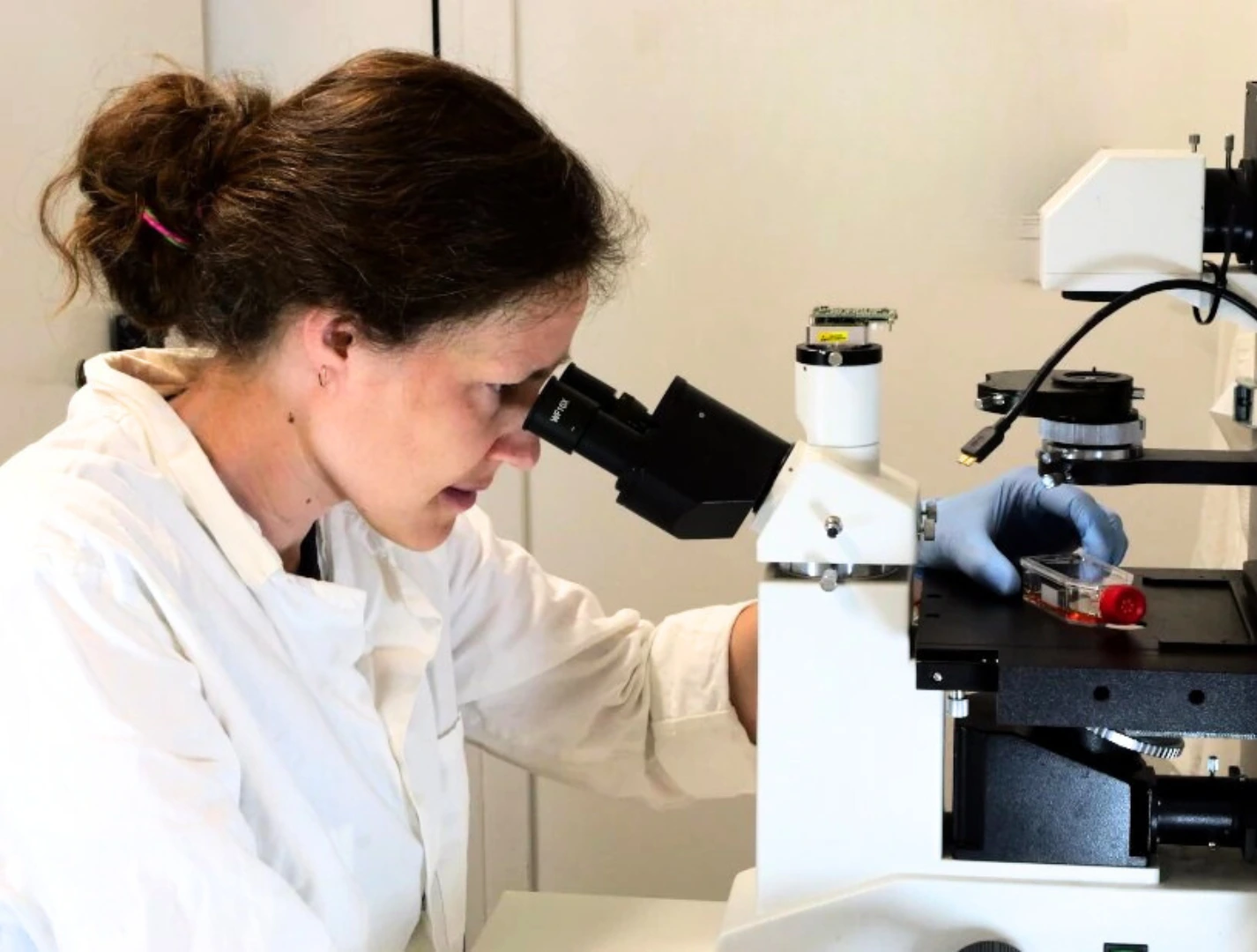Horizon Europe 2026/2027 best topics for "advanced batteries"
Writer
Celeste Chidiac, PhD
Keywords
Microfluidic Devices, Intelligent Microfluidics, Artificial Intelligence, Machine Learning
Opening
Dec 2025, Jan/May/June/Dec 2026, May/Aug 2027
Deadline
Mar/Ap/Sep/Oct 2026, Feb/Mar/Ap/Sep/Oct/Dec 2027
Keywords
Intelligent Microfluidics
Deep Learning
Microfluidic Devices
Artificial Intelligence
Machine Learning
clean energy
sustainable mobility
stationary storage
Your microfluidic SME partner for Horizon Europe!
We take care of microfluidic engineering, work on valorization and optimize the proposal with you
Horizon Europe 2026-2027
Calls Ordered by "advanced batteries" relevance
We have categorized the most relevant topics from the Horizon Europe 2026-2027 work programmes according to the impact that “advanced batteries for mobility & stationary storage” can have on the calls and related topics. We are sharing our analysis in case it can help you with project funding efforts. And, of course, if our microfluidics expertise can be of use to you as a partner, we would be delighted to discuss it further.

The relevance is indicated at the beginning of the topic in square brackets.
Discover more!
Calls ordered by “advanced batteries for mobility & stationary storage” relevance
[98%] HORIZON-CL5-2026-10-D2-03 – INTEGRATED PRODUCTION AND PRODUCT DEVELOPMENT FOR NEXT-GENERATION LITHIUM-BASED BATTERIES FOR MOBILITY (BATT4EU AND MADE IN EUROPE PARTNERSHIPS)
- Type of action: IA
- Budget (topic, M€): 100.91
- Expected EU contribution per project (M€): ~33.63
- Estimated # projects: 3
- Opening: 04 Jun 2026 • Deadline: 08 Oct 2026.
Scientific scope. Large integrated piloting to co‑develop next‑gen Li‑based cell chemistries and their manufacturing, aligning product and process design for scale‑up; strong emphasis on European industrial value‑chain, manufacturability, quality, sustainability, and safety, with both battery partnerships involved to bridge R&D to factory lines.
Why it fits “battery”. This is the flagship line to move promising Li chemistries from lab to pilot/early industrial scale, combining design‑for‑manufacture, cost, sustainability (LCA), and safety – exactly where battery innovators can demonstrate competitive advantage and readiness for supply to EU mobility OEMs.
[96%] HORIZON-CL5-2027-05-D2-08 – DEMONSTRATION FOR LONG‑DURATION BATTERY ENERGY STORAGE SYSTEMS (BATT4EU PARTNERSHIP)
- Type of action: IA
- Budget (topic, M€): 19.09
- Expected /project (M€): ~9.55
- # projects: 2
- Opening: 05 May 2027 • Deadline: 15 Sep 2027.
Scientific scope. Full-scale demos of multi-hour battery storage delivering system services (firm capacity, flexibility, resilience), with quantified techno-economic, environmental, and safety performance; focus on durability, degradation, BOS integration, and grid orchestration.
Why it fits “battery”. LDES is pivotal for renewable integration and new markets (capacity, congestion relief, microgrids). This topic lets battery developers validate long-duration chemistries (e.g., Na‑ion, Li‑ion LFP/LTO variants, or novel architectures) in real-world operation with bankable evidence.
[95%] HORIZON-CL5-2027-02-D2-06 – SUSTAINABLE AND COMPETITIVE CELL PRODUCTION TECHNIQUES FOR LITHIUM‑ION AND SODIUM‑ION BATTERIES (BATT4EU PARTNERSHIP)
- Type of action: IA
- Budget (topic, M€): 38.18
- Expected / project (M€): ~19.09
- # projects: 2
- Opening: 03 Dec 2026 • Deadline: 31 Mar 2027.
Scientific scope. Advanced cell manufacturing for Li‑ion and Na-ion: dry‑coating, solvent-free, high-throughput calendaring/formation, inline metrology, energy/water reduction; robust quality controls; worker safety; sustainability by design across the gigafactory line.
Why it fits “battery”. A direct lever to lower €/kWh and emissions of EU cells while improving yield and reliability – core to competitive European gigafactories and diversification into Na‑ion for stationary markets.
[94%] HORIZON-CL5-2026-09-D2-01 – PRODUCING BATTERY‑GRADE MATERIALS FOR ELECTRODES THROUGH SUSTAINABLE PROCESSING/REFINING OF RAW MATERIALS OR DEVELOPING BIO‑BASED MATERIALS (BATT4EU PARTNERSHIP)
- Type of action: RIA
- Budget (topic, M€): 28.64
- Expected / project (M€): ~7.16
- # projects: 4
- Opening: 05 May 2026 • Deadline: 15 Sep 2026.
Scientific scope. Sustainable refining routes to battery-grade metals/materials for next-gen chemistries and/or bio-based carbon/electrode materials; targets lower footprints, chemical use, and energy, with techno-economic and LCA validation.
Why it fits “battery”. Upstream electrode materials decisively influence performance, cost, and sovereignty. This topic builds resilient EU supply with greener graphite substitutes and sustainable precursors for Na‑ion or advanced Li chemistries.
[93%] HORIZON-CL5-2026-03-D2-02 – DEVELOPMENT OF DIRECT RECYCLING PROCESSES (BATT4EU PARTNERSHIP)
- Type of action: RIA
- Budget (topic, M€): 14.32
- Expected /project (M€): ~4.77
- # projects: 3
- Opening: 18 Dec 2025 • Deadline: 31 Mar 2026.
Scientific scope. Direct recycling to recover and rejuvenate electrode materials (e.g., relithiation, binder removal, impurity control) with minimal reprocessing; emphasis on process selectivity, product quality, safety, and economics.
Why it fits “battery”. Direct recycling preserves cathode/anode value, reducing energy and reagents vs. pyromet/hydromet routes. Closing the loop, cutting costs and emissions, and mitigating raw material risks is crucial.
[92%] HORIZON-CL5-2027-02-D2-05 – IMPROVEMENT OF ADAPTABILITY, FLEXIBILITY AND EFFICIENCY OF EXISTING RECYCLING PROCESSES (BATT4EU PARTNERSHIP)
- Type of action: IA
- Budget (topic, M€): 19.09
- Expected /project (M€): ~9.55
- # projects: 2
- Opening: 03 Dec 2026 • Deadline: 31 Mar 2027.
Scientific scope. Retrofit and intensify existing hydromet/pyromet lines to cope with diverse chemistries and formats (LFP, NMC, Na‑ion), improve yields/purity, reduce reagents/energy, enhance safety, and valorize by-products.
Why it fits “battery”. Accelerates industrial circularity by upgrading current plants – fastest path to higher EU recovery rates and domestically sourced secondaries for cathode/anode supply.
[90%] HORIZON-CL5-2027-04-TWO-STAGE-D2-07 – NOVEL APPROACHES TOWARDS NEXT‑GENERATION BATTERY CONCEPTS, LEVERAGING INNOVATIVE ADVANCED MATERIALS (BATT4EU & IAM4EU PARTNERSHIPS)
- Type of action: RIA (two‑stage)
- Budget (topic, M€): 48.18
- Expected /project (M€): ~4.82
- # projects: 10
- Opening: 15 Dec 2026 • Deadlines: 14 Apr 2027 (1st), 07 Oct 2027 (2nd).
Scientific scope. Materials‑enabled battery concepts beyond state‑of‑the‑art (e.g., high‑voltage, fast‑charge, safer electrolytes/SEs, novel architectures) with a strong SSbD approach and cross-fertilization with advanced materials initiatives.
Why it fits “battery”. A high‑TRL‑agnostic funnel for risky/high‑impact chemistries and components – ideal to mature differentiating materials or cell designs toward validated prototypes.
[88%] HORIZON-CL5-2026-09-D2-04 – COORDINATED TOPIC WITH INDIA ON RECYCLING OF EV BATTERIES
- Type of action: IA
- Budget (topic, M€): 9.55
- Expected /project (M€): ~9.55
- # projects: 1
- Opening: 05 May 2026 • Deadline: 15 Sep 2026.
Scientific scope. Joint EU‑India demonstration/research to establish interoperable, safe, and sustainable EV battery recycling solutions across regulatory and feedstock contexts, with attention to quality of recovered materials.
Why it fits “battery”. International supply chains need common recycling standards. This topic discusses‑risks of‑cross-border practices and creates exportable EU know-how for end-of-life management.
[85%] HORIZON-CL5-2026-05-D5-01 – LARGE‑SCALE DEMONSTRATION OF HEAVY‑DUTY BATTERY ELECTRIC VEHICLES (HD‑BEV) TOWARDS LONG‑HAUL LOGISTICS (2ZERO PARTNERSHIP)
- Type of action: IA
- Budget (topic, M€): 68.00
- Expected /project (M€): ~34.00
- # projects: 2
- Opening: 18 Dec 2025 • Deadline: 14 Apr 2026.
Scientific scope. Fleet‑scale trials of HD‑BEVs for long‑haul, addressing energy consumption, duty‑cycle optimization, charging logistics (incl. MCS readiness), TCO, reliability and safety.
Why it fits “battery”. Pushes pack durability, thermal/safety systems, and charging interoperability under harsh logistics profiles – high‑impact validation for cell/system providers and integrators.
[84%] HORIZON-CL5-2027-03-D5-04 – DEMONSTRATION OF ZERO‑EMISSION COACHES AND BUSES (2ZERO PARTNERSHIP)
- Type of action: IA
- Budget (topic, M€): 30.00
- Expected /project (M€): ~10.00
- # projects: 3
- Opening: 15 Dec 2026 • Deadline: 14 Apr 2027.
Scientific scope. City/intercity ZEB demos with demanding duty cycles; energy efficiency, fast charging/depots, battery life, safety, and circular maintenance.
Why it fits “battery”. Transit fleets are early adopters; this call helps prove battery lifetime, operational availability, and cost – evidence crucial for procurement scale-up.
[83%] HORIZON-CL5-2027-03-D5-05 – HIGHER‑VOLTAGE, MEGAWATT‑CHARGING‑SYSTEM COMPATIBLE MODULAR POWERTRAIN (2ZERO PARTNERSHIP)
- Type of action: IA
- Budget (topic, M€): 24.00
- Expected /project (M€): ~12.00
- # projects: 2
- Opening: 15 Dec 2026 • Deadline: 14 Apr 2027.
Scientific scope. Develop/validate HV modular e‑powertrains compatible with MCS, improving fast‑charge ability, efficiency, and pack/system safety under high C‑rates.
Why it fits “battery”. Tackles the charging bottleneck for HD transport, driving requirements for cell impedance, thermal pathways, and BMS control to enable megawatt charging.
[81%] HORIZON-CL5-2027-03-D5-03 – DATA‑DRIVEN CIRCULAR ECONOMY FOR THE E‑MOBILITY ECOSYSTEM (2ZERO PARTNERSHIP)
- Type of action: RIA
- Budget (topic, M€): 24.00
- Expected /project (M€): 5.00-7.00
- # projects: 4
- Opening: 15 Dec 2026 • Deadline: 14 Apr 2027.
Scientific scope. Data frameworks and tools to enable circularity (passporting, SoH, 2nd‑life qualification, dismantling/recycling flows) across EV batteries and components.
Why it fits “battery”. High-quality lifecycle data underpins reuse and recycling economics; this call aligns with regulatory data needs and reduces risk for second‑life and EoL markets.
[80%] HORIZON-CL5-2027-03-D5-18 – ENHANCED ELECTRIC OPERATION AND BATTERY DURABILITY (ZEWT PARTNERSHIP)
- Type of action: IA
- Budget (topic, M€): 20.00
- Expected /project (M€): ~10.00
- # projects: 2
- Opening: 15 Dec 2026 • Deadline: 14 Apr 2027.
Scientific scope. Electric operation for waterborne transport focuses on battery durability, performance in marine conditions, safety and integration with vessel systems.
Why it fits “battery”. Extends battery market to maritime; harsh‑environment durability/safety solutions (thermal, sealing, diagnostics) often spill back to road/off‑road applications.
[80%] HORIZON-CL5-2026-03-D3-22 – NOVEL SOLUTIONS FOR OFF‑GRID STORAGE OF RENEWABLE ENERGY FOR CRITICAL INFRASTRUCTURES
- Type of action: RIA
- Budget (topic, M€): 12.00
- Expected / project (M€): ~4.00
- # projects: 3
- Opening: 18 Dec 2025 • Deadline: 31 Mar 2026.
Scientific scope. Storage for resilient, off‑grid/edge applications (hospitals, telecoms, civil protection), delivering high safety, availability, and maintainability with RES coupling.
Why it fits “battery”. Targets robust, fast‑deployable battery systems for critical loads – a strong wedge market for safe chemistries, rugged packs, and autonomous energy management.
[79%] HORIZON-CL5-2026-03-D3-21 – HYBRID AI‑CONTROL FRAMEWORK FOR NEXT‑GENERATION GRID‑SCALE ENERGY STORAGE AND SYSTEM INTEGRATION
- Type of action: IA
- Budget (topic, M€): 14.00
- Expected / project (M€): ~7.00
- # projects: 2
- Opening: 18 Dec 2025 • Deadline: 31 Mar 2026.
Scientific scope. AI‑enhanced forecasting/optimization and control for grid‑scale storage to deliver stacked services, improve lifetime, and ensure safe operation within grid codes.
Why it fits “battery”. Advanced BMS/EMS is a key differentiator; data‑driven control cuts degradation and OPEX, unlocking revenue stacking for battery fleets.
[78%] HORIZON-CL5-2027-07-D3-28 – INTEGRATED APPROACHES FOR RETROFITTING INFRASTRUCTURES WITH INNOVATIVE ENERGY STORAGE TECHNOLOGIES
- Type of action: IA
- Budget (topic, M€): 24.00
- Expected / project (M€): ~8.00
- # projects: 3
- Opening: 04 Aug 2027 • Deadline: 01 Dec 2027.
Scientific scope. Retrofit strategies integrating storage into existing infrastructures (industrial sites, campuses, transport hubs) with safety, permitting, and business‑model validation.
Why it fits “battery”. A practical route to deploy stationary batteries at scale with clear CAPEX/OPEX cases; good for developers of modular containerized systems and integrators.
[75%] HORIZON-CL4-2026-01-MATERIALS‑PRODUCTION‑14 – IMPROVING AVAILABILITY OF SECONDARY RAW MATERIALS THROUGH RECYCLING (IA)
- Type of action: IA
- Budget (topic, M€): 28.00
- Expected /project (M€): ~7.50
- # projects: 4
- Opening: 06 Jan 2026 • Deadline: 21 Apr 2026.
Scientific scope. Scale recycling technologies and value‑chains for secondary raw materials with quality assurance and traceability; process efficiency and environmental performance are central.
Why it fits “battery”. Strengthens EU access to critical secondaries (e.g., Ni, Co, graphite substitutes) feeding back into battery materials lines and reducing import dependencies.
[73%] HORIZON-CL4-2026-01-MATERIALS‑PRODUCTION‑12 – TECHNOLOGIES FOR INNOVATIVE EXTRACTION OF CRITICAL RAW MATERIALS (RIA)
- Relevance: 73%
- Type of action: RIA
- Budget (topic, M€): 19.00
- Expected / project (M€): 5.00-7.00
- # projects: 3
- Opening: 06 Jan 2026 • Deadline: 21 Apr 2026.
Scientific scope. New extraction approaches (selective, lower‑impact, digitalized) for CRMs with emphasis on sustainability and permitting readiness.
Why it fits “battery”. Secures upstream Li/Ni/Co/graphite routes, lowering supply risk for EU cell makers and enabling transparent, sustainable sourcing claims.
[71%] HORIZON-CL4-2026-01-MATERIALS‑PRODUCTION‑11 – SCALING UP RECYCLING TECHNOLOGIES AND ADVANCED PRE‑TREATMENT (RIA)
- Relevance: 71%
- Type of action: RIA
- Budget (topic, M€): 47.00
- Expected /project (M€): 6.00-9.00
- # projects: 6
- Opening: 06 Jan 2026 • Deadline: 21 Apr 2026.
Scientific scope. Advanced pre-treatments (sorting, shredding, de‑activation) and scale‑out of recycling tech for complex waste streams, with digital tracking and quality control.
Why it fits “battery”. High‑quality pre‑treatment is decisive for safe, economical LIB recycling; advances here reduce fires, losses and OPEX across the battery EoL chain.
[70%] HORIZON-CL4-2027-01-MATERIALS‑PRODUCTION‑16 – TECHNOLOGIES FOR INNOVATIVE PROCESSING OF RAW MATERIALS (IA)
- Type of action: IA
- Budget (topic, M€): 49.00
- Expected /project (M€): 10.00-12.50
- # projects: 4
- Opening: 22 Sep 2026 • Deadline: 02 Feb 2027.
Scientific scope. Efficient, lower‑impact processing of raw materials to battery‑relevant intermediates with robust techno‑economic and sustainability validation at pilot scale.
Why it fits “battery”. Processing innovations reduce costs/footprints of cathode/anode precursors and underpin the competitiveness of EU battery‑grade feedstock.
At the very end: How microfluidics can advance “battery” R&I
- High‑throughput electrolyte & additive screening with nanolitre reactors to map conductivity, SEI formation, viscosity and gassing rapidly.
- Solid‑state electrolyte infiltration into porous scaffolds and composite cathodes using pressure‑/capillary‑assisted microchannels to improve interfacial contact and density.
- Single‑particle electrochemistry to study heterogeneity (Li plating, impedance rise) and correlate particle morphology with degradation.
- Operando diagnostics (chip‑integrated optical/IR/pressure sensors) to observe gas evolution and thermal events at early onset.
- Structured electrode manufacturing (micro‑patterned current collectors, graded porosity) to enhance ion transport and fast‑charge tolerance.
- Thermal management with microchannel heat‑sinks for packs/modules under high C‑rate charging (MCS), improving safety and cycle life.
- Recycling process intensification via micro‑reactors for selective leaching/precipitation, reducing reagent consumption and improving purity.
- Quality control inline: microfluidic rheology and particle‑size metrology for slurries and separators to stabilize gigafactory yields.
The MIC already brings its expertise in microfluidics to Horizon Europe:
H2020-NMBP-TR-IND-2020

Microfluidic platform to study the interaction of cancer cells with lymphatic tissue
H2020-LC-GD-2020-3

Toxicology assessment of pharmaceutical products on a placenta-on-chip model
FAQ – Horizon Europe 2026–2027: best-fit topics for advanced batteries
Which are the most battery-ready topics of the 2026-2027 work programme?
Three are notable in terms of scope, budget, and direct effect:
- Integrated production and product development of next-generation lithium-based batteries (IA, 2026) – a large, manufacturing-focused flagship to develop advanced chemistries along with factory-ready processes contemporarily.
- Greener and competitive cell production methods of Li-ion and Na-ion (IA, 2026-2027), dry-coating, solvent-free operations, inline metrology, output/energy saving, and safety of workers.
- Multi-hour storage with bankable techno-economic, environmental, and safety evidence in the real-world operation demonstrations (IA, 2027), long-duration battery energy storage systems (LDES)
All three are aimed at advancing promising cells and systems from lab-proven to pilot or early industrial scale, while inculcating manufacturability and sustainability.
Are there any specific numbers (budgets, amount of grants expected, projects)?
Yes. The common topic envelopes in this category range between 14 and 101 € millions. Anticipated EU funds are typically 5-34M per project, and 1-10 projects are funded per action. For example, a combined Li-battery manufacturing project will require approximately 100.9M€ across 3 projects. The LDES demos average around 9.5M per project. Materials and recycling RIAs are located at the 4-9M/project location.
What are the explicit in-play battery chemistries and applications?
The calls are chemistry-agnostic but repeatedly mention Li-ion (with LFP/LTO variants) or sodium-ion, as well as material-enabled next-gen concepts (high-voltage, safer electrolytes or solid electrolytes, novel architectures). It is quite evident that the application split would be mobility (HD-BEV, buses/coaches, powertrains that can be charged with MCS megawatt), and stationary storage (in particular LDES with multi-hour durations).
Is recycling appropriate, and what is its maturity level?
Two complementary avenues:
- Direct recycling (RIA, 2026) – relithiation, removing binders, control of impurity; focus on selectivity, quality of products, and economics.
- Modifications on already existing hydromet/pyromet lines (IA, 2027) – retrofit to accept LFP, NMC, Na-ion streams; increase in yield/purity, reduction in reagent/energy consumption, safety, increase in value added to by-products.
They are viable options to enhance EU recovery and to obtain secondary feedstocks for cathode/anode lines.
IA vs RIA: positioning of our TRL and deliverables?
RIA: low-to-mid TRL and high novelty (materials, processes, data structures). Demand assayed lab/pilot data, strict SSbD and LCA, and specified KPIs (e.g., percentage reduction in degradation, Wh/L improvement, solvent/energy reduction).
IA: mid-to-high TRL demonstrations/pilots having assets in, and tangible adoption channels within the industry. In this case, the assessors will require bankable evidence: uptime/availability, complete safety case, grid/service compliance, quality/yield statistics, and the overall cost of ownership.
What cross-cutting needs are present constantly (and are usually not addressed well enough)?
Three threads recur:
- Sustainably designed with measured LCAs and worker safety; no solvents or reduced energy use are advantages.
- Information and quality: online metrology, battery passport, SoH/SoX traceability, and compliance with standards.
- Safety and reliability: thermal runaway, high-C-rate charging capability (particularly MCS), and strong BOS inclusion to stationary systems.
Each of these (not buried within “dissemination”) has higher scores with work-package leads assigned to them.
What is the way microfluidics can speed up battery R&I in these areas?
Microfluidics has no role to play in decoration in this case; it addresses bottlenecks of throughput, control, and observation:
- Screening of conductivity, SEI formation, viscosity, and gassing in nanolitre reactors at high throughput to map the results.
- The infiltration of solid-state electrolyte in porous scaffolds using pressure/capillary microchannels to enhance interfacial touch and densification.
- Single-particle electrochemistry to measure heterogeneity (Li plating, impedance increase) and associate morphology with degradation.
- On-chip (optical/IR/pressure) operando diagnostics.
- Fast-charge tolerance, structured electrode production (micro-patterned collectors, graded porosity).
- High-C-rate/MCS Thermal management using microchannel heat sinks.
- Enhancement of recycling by micro-reactors of selective leaching /precipitation with reduced use of reagents and increased purity.
These products are easily aligned with RIA (methods, materials) and IA (quality, yield, safety) KPIs.
What are the revisited partnerships and ecosystems?
There are battery-related European Partnerships all over BATT4EU (batteries), 2ZERO (road transport), ZEWT (waterborne), and IAM4EU (advanced materials). Consortia that span a battery topic and application partnership (e.g., BATT4EU x 2ZERO to HD-BEV) generally have clearer impact logic and lines of exploitation.
A pragmatic consortium recipe to enhance chances of success?
A pattern that works:
- Industrial anchor(s) of controlling strategic assets (pilot lines, fleets, grid sites).
- Specialists in method (manufacturing, safety, grid codes, digital twins, LCA/SSbD).
- Screening, inline QC, and process intensification to de-risk scale-up.
Early compliance and early adoption by end users and regulators.
Adding a more specific SME to our success record in Horizon projects, with engineering + proposal architecture coverage, is likely to increase the chances of practical success by a factor of 2 relative to official averages, since the proposal will be a more precise deliverable, with clearer risk and validation.
What is the role of the Microfluidics Innovation Center (MIC)?
MIC includes the engineering spine: micro-reactors of electrolyte and recycling chemistry, single-particle chip and operando diagnostics, inline rheology/particle metrology of gigafactory slurries, micro-patterned electrodes, and thermal micro-channels. We also co-write the impact and implementation sections, structure KPIs at the WP level, and contribute to demonstrators/prototypes. As an SME participating in several EU consortium tenders, our participation generally enhances the value chain logic and measurables, and, yes, in reality, that considerably contributes to raising the competitiveness of proposals.



